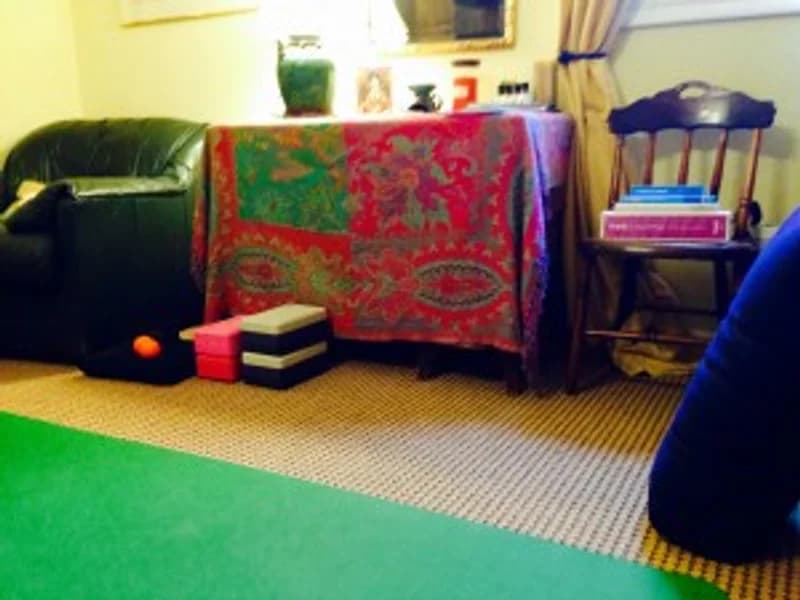
Is Hot Yoga Good for You?
In many places across the United States it can seem like hot yoga studios are taking control of the exercise market. Nearly all major cities have at least one hot yoga studio and many traditional hatha yoga studios are quickly converting at least one room for hot yoga classes. With so many hot yoga classes out there, many people are asking, what are the benefits of hot yoga? And, with temperatures going as high as 115° Fahrenheit, people are wondering is it safe and is hot yoga good for you? Hot Yoga Benefits Proponents of hot yoga say that hot yoga provides numerous benefits and is one of the best forms of exercise out there. Hot yoga is essentially yoga performed in a heated environment, so any benefits of regular yoga will also be a benefit for hot yoga. Scientific research on hot yoga is still scarce, but there are many studies available on the benefits of normal yoga practice. Consistent yoga practice has been shown to provide physical benefits, including improved balance, reduced chronic back and neck pain, improved lung capacity, and stronger bones. Other studies have shown yoga to have mental benefits, such as lowered feelings of anxiety and depression, decreased stress levels, and improved focus and memory. Hot yoga advocates maintain that practice in a heated environment offers all of these benefits as well as other benefits not achieved in a normal cooler studio. Hot yoga practitioners say that the immediate warmth of a heated class makes hot yoga safer than traditional yoga. The heat helps people work slowly and safely into postures making injury less likely. Also, the heat loosens muscles and joints creating greater flexibility than a traditional class. A Colorado State University study showed that people in a Bikram yoga class had increased shoulder, lower back, and hamstring flexibility. Hot yoga advocates also maintain that hot yoga can improve people’s health. Higher temperatures make hot yoga practitioners sweat more, which many argue has a cleansing effect on the body by flushing out toxins. Performing difficult poses in a heated room also gives hot yoga practitioners an excellent cardiovascular workout, strengthening heart health. Hot Yoga Risks Just like traditional yoga or any exercise, there are many risks that hot yoga practitioners should be aware of. Hot yoga can create greater flexibility, but it is possible to stretch a muscle too much. Stretching a muscle beyond 20 to 25 percent of its resting length can damage it. Also, pushing yourself too far in poses can result in torn cartilage or painful and loose joints. Some hot yoga practitioners also report dizziness, nausea, and muscle weakness when in hot yoga classes. With temperatures ranging between 90 and 115 degrees, dehydration is a likely cause. In extreme cases, loss of electrolytes through excessive sweating can cause cardiac arrhythmia. Is Hot Yoga Safe? With all these risks, can hot yoga be considered safe? To address the heat-related risk, the America Council of Exercise commissioned a study to analyze the safety of hot yoga practice by looking at hot yoga practitioners’ core body temperatures. Study participants took the same yoga class twice, the first time in a studio set to room temperature and then again the next day at a studio heated to 92 degrees with significant humidity. Core body temperatures went up by 3.1 degrees on average in the non-heated class and 2.9 degrees in the heated class, showing no real difference in body temperatures between the two classes. In the hot class, the highest body temperature recorded was 102.4 degrees, which is still nearly two degrees lower than the danger body temperature of 104 degrees where fatigue and heat-related problems are common. Based on this study, heat related risks are not likely when practicing hot yoga. However, it is important to stay hydrated before and after class. For first time practitioners it is also important to take things easy in order to get adjusted to the heat. The risks of pushing yourself too far and injuring your muscles, joints, or cartilage are also important to keep in mind. The most important thing to do to limit your risk of injury is to know your body and not push yourself too hard in the heat. When practicing yoga the focus should be internal to be aware of what is happening inside the body and not external worried about competition or comparing. With knowledge of your own body and your limits, hot yoga-related injury risk can be significantly reduced. Hot Yoga vs. Traditional Yoga So if hot yoga is generally safe, is it better than traditional yoga? Many hot yogis will maintain that hot yoga practice is much better than regular yoga practice. Bringing up personal stories of weight loss, better health, greater flexibility, energy enhancement, and better mental focus in daily activities, hot yoga practitioners have many reasons to stick with their fitness choice. Not enough research has been done to look at some of these claims, such as higher energy levels or improved health from hot yoga practice compared to regular yoga practice. However, studies have shown that hot yoga practice does not burn calories, increase strength, or improve endurance more than non-heated yoga practice. That being said, though, yoga is a personal choice and your perception of a class is the most important thing. Anyone interested in hot yoga should try a few classes and see how they feel. Regular practitioners that enjoy heated studios should continue to practice hot yoga. If hot yoga makes you feel better than traditional yoga, continue your practice. As long as hot yoga practitioners stay hydrated, keep an eye-out for heat risk injuries, and know their limits, they will be safe.
About the Author
The Yoga Simple Team is dedicated to making yoga accessible and enjoyable for everyone. With a focus on practical tips and mindful living, we help you integrate yoga into your daily life.
Related Posts

Turning a Wanderlust Dream into a Wander-ful Adventure
Are you wander-lusting for a life abroad? Why not teach yoga as part of that? It may be easier than you think! Tori Young, an American yoga teacher, complete...

I Tried It: Stand Up Paddleboard (SUP) Yoga
Within the confines of a studio you may find an ambience of soft lights and pleasant sounds, but with warmer weather coming our way, why settle for a replica of...

How to Create a Personal Space for Daily Practice
Whether you are working with a space slightly larger than a mat or the most expansive room in your house, making physical space at home for your mediation, yoga...